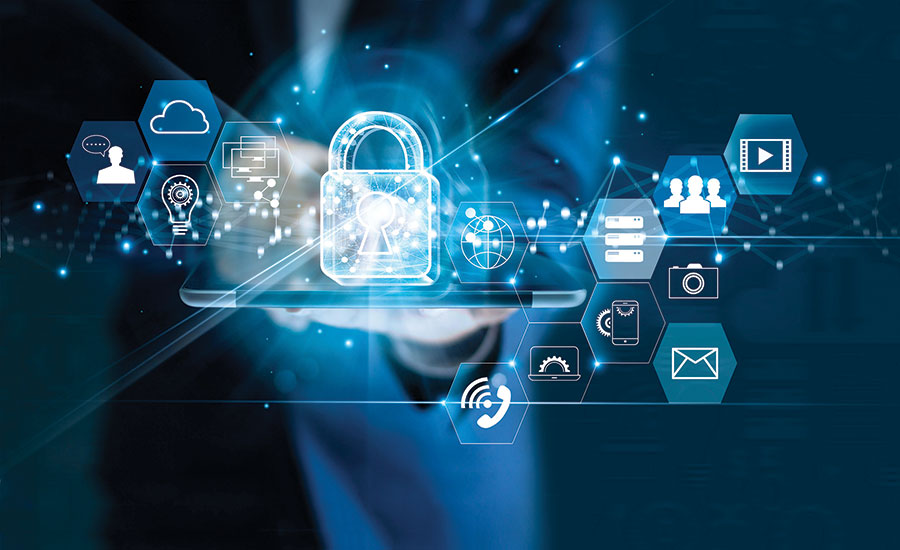The Digital Frontier: Exploring the Imperative of Cybersecurity
In an era characterized by interconnectedness and digital transformation, cybersecurity emerges as a paramount concern. This essay delves into the multifaceted realm of cybersecurity, discussing its significance, challenges, strategies, and the evolving landscape of cyber threats.

The Significance of Cybersecurity
As societies become increasingly reliant on digital technologies, the security of our interconnected systems becomes vital. Cybersecurity encompasses measures and practices that safeguard data, networks, and computer systems from cyber threats, which range from data breaches to ransomware attacks. A breach not only threatens sensitive information but also disrupts critical infrastructures, making cybersecurity an essential pillar of modern society.
Challenges and Threat Landscape
Cyber threats are rapidly evolving, posing complex challenges to cybersecurity professionals. Hackers employ sophisticated techniques like phishing, malware, and social engineering to exploit vulnerabilities. Additionally, the rise of the Internet of Things (IoT) introduces new attack vectors as interconnected devices become potential entry points for cybercriminals. The challenge lies in staying one step ahead of these threats.
Strategies for Effective Cybersecurity
A robust cybersecurity strategy combines technological solutions, policy frameworks, and a vigilant human element. Encryption, multi-factor authentication, and intrusion detection systems fortify digital defenses. Comprehensive cybersecurity policies establish guidelines for data handling, incident response, and employee training. Cultivating a culture of cybersecurity awareness ensures that individuals become the first line of defense against cyber threats.
Collaborative Approach and Future Trends
The collaborative nature of cybersecurity cannot be understated. Public-private partnerships foster information sharing and coordination in the face of cyberattacks. Machine learning and artificial intelligence are increasingly integrated into cybersecurity measures, enabling proactive threat detection. The future holds promise for biometric authentication, blockchain-based security, and quantum-safe cryptography.
Safeguarding Digital Frontiers: The Dynamic Landscape of Cybersecurity Threats
As the digital realm expands, so does the complexity of cyber threats. This essay delves into the dynamic landscape of cybersecurity threats, highlighting emerging challenges, evolving attack vectors, and the imperative of proactive defense mechanisms.
Emerging Threats and Attack Vectors
Cyber threats are constantly evolving, demanding continuous vigilance. Nation-state cyber espionage, ransomware attacks, and supply chain vulnerabilities have gained prominence. Furthermore, attackers exploit human psychology through social engineering, leveraging psychological tactics to manipulate individuals into divulging sensitive information or performing actions that compromise security.
The Human Factor in Cybersecurity
Despite advanced technological solutions, human behavior remains a significant vulnerability. Employees can unknowingly expose organizations to risk through poor password practices, clicking on phishing emails, or neglecting security protocols. Educating employees about cybersecurity risks and best practices is a critical component of a comprehensive cybersecurity strategy.
Zero Trust Paradigm and Beyond
The traditional perimeter-based security model is proving inadequate in the face of modern threats. The Zero Trust paradigm asserts that no entity should be inherently trusted, and access controls should be rigorously enforced. This model aligns with the reality of today’s interconnected and mobile workforce, requiring continuous monitoring and authentication regardless of location.
The Future of Cybersecurity Resilience
The future of cybersecurity lies in embracing resilience. Organizations must focus on rapid incident response, efficient data recovery, and business continuity. Red teaming and ethical hacking exercises help identify vulnerabilities before malicious actors exploit them. As cyber threats continue to evolve, a proactive mindset and an adaptive approach to defense will be essential.

Cybersecurity in a Hyperconnected World: Protecting Digital Assets
In the age of hyperconnectivity, cybersecurity takes center stage as the guardian of our digital assets. This essay delves into the intricate web of cybersecurity challenges, discussing the impact of interconnected technologies, strategies for protection, and the role of individuals in safeguarding their digital presence.
Interconnected Technologies and Vulnerabilities
Hyperconnectivity, fueled by the Internet of Things, cloud computing, and mobile devices, has revolutionized how we interact with technology. However, this interconnectedness also expands the attack surface for cybercriminals. Vulnerabilities in one system can propagate to others, emphasizing the need for comprehensive security measures that span across devices and platforms.
Proactive Defense Strategies
A proactive cybersecurity strategy involves layers of defense mechanisms. Firewalls, intrusion detection systems, and anti-malware solutions create a barrier against external threats. Regular software updates and patch management close known vulnerabilities. Additionally, organizations must implement robust access controls, ensuring that only authorized personnel can access critical systems and data.
Individual Responsibility and Cyber Hygiene
Individuals play a pivotal role in cybersecurity. Practicing good cyber hygiene—such as using strong, unique passwords, being cautious of suspicious emails, and avoiding public Wi-Fi for sensitive transactions—mitigates the risk of falling victim to cyberattacks. Cybersecurity education and awareness campaigns empower individuals to take control of their digital security.
Collaboration and the Path Forward
Cybersecurity is a collective endeavor. Collaboration among governments, industries, and academia is essential for sharing threat intelligence and establishing global cybersecurity norms. Technological advancements, like quantum-resistant encryption and AI-driven threat detection, show promise in fortifying defenses. The path forward involves constant adaptation to emerging threats and fostering a culture of cybersecurity consciousness.
Ethical Considerations in Cybersecurity: Balancing Security and Privacy
In the pursuit of robust cybersecurity, ethical considerations play a crucial role. This essay delves into the ethical dimensions of cybersecurity, discussing the tension between security and privacy, the impact of surveillance measures, and the imperative of preserving individual rights in a digital age.
The Duality of Security and Privacy
Cybersecurity measures often intersect with individual privacy rights. While protecting sensitive data is paramount, excessive surveillance and data collection can infringe upon personal freedoms. Striking the right balance between security and privacy requires thoughtful design of cybersecurity protocols that safeguard critical information without unduly compromising individual autonomy.
Surveillance and Individual Liberties
In the aftermath of cyberattacks and terrorist threats, governments and organizations may advocate for enhanced surveillance measures to prevent future incidents. However, extensive surveillance raises ethical concerns related to mass data collection, potential abuse of power, and the erosion of civil liberties. Transparent policies and strong oversight mechanisms are necessary to ensure surveillance practices remain within ethical boundaries.
Ethical Hacking and Disclosure
Ethical hacking, or penetration testing, involves authorized individuals attempting to identify vulnerabilities in computer systems. While it serves a noble purpose—strengthening security—ethical hackers must adhere to strict ethical guidelines to avoid causing harm. Responsible disclosure of vulnerabilities ensures that software developers can patch vulnerabilities before malicious actors exploit them.
Preserving Individual Autonomy
As cybersecurity measures become more sophisticated, questions arise about the implications of relinquishing control to automated systems. Decisions made by AI-driven cybersecurity tools, such as blocking access or flagging content, have real-world consequences. Ensuring human oversight and accountability in automated cybersecurity processes is essential to prevent unintended ethical consequences.
Ethical considerations underscore the complexity of cybersecurity. Balancing security imperatives with individual rights, fostering transparency in surveillance, and adhering to ethical guidelines in hacking practices are essential steps in navigating the ethical terrain of cybersecurity.
